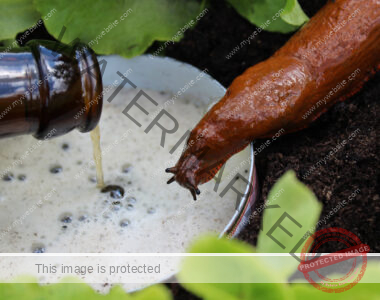
Depending on where you live, you may catch a glimpse of the birds leaving your area, flying overhead en masse, or settling in your yard. October is the center of the fall migration season, which runs from 1 August to 15 November. During this time, billions of birds collectively fly billions of miles south in search of food and warmth.
This is a wonderful time to watch birds and attract more birds to your yard. You can track migration patterns in your area using Birdcast’s migration toolsHowever, this journey is physically challenging and can be dangerous for the birds; Some won’t make it. Habitat loss, unpredictable weather conditions and large structures such as buildings and towers can hinder their vital flight.
A major factor in bird migration is light pollution. Migratory birds use natural moonlight and starlight to navigate their flight patterns, so artificial light can be problematic, causing them to lose their way and Go to hellSadly, every year during this time millions of birds die after colliding with illuminated buildings. Additionally, birds depend on natural lighting to complete their migration schedules on time. Artificial light can disrupt this, causing birds to migrate either too early or too late, which disrupts important behaviors such as nesting, foraging, sleeping, and protection from predators.
Learn what you can do at home to help birds during migration, including joining the “Lights for the Birds” campaign.

Joining the DarkSky “Lights Out” campaign
mission of DarkSky International Its aim is to restore the night-time environment and protect communities from the harmful effects of light pollution. The organization, along with other groups such as The National Audubon Society, encourages residents to “turn off the lights” from dusk to dawn during migration season to protect more birds.
The idea is to turn off unnecessary lights during this time so that migratory birds can rely on natural light and are not confused or distracted by artificial lights. You can manually turn off your inside lights and make sure the outside lights are either off or have a shield. Consider setting a timer to make this easier. These simple actions help protect birds and reduce your home’s energy consumption.
How to adjust your lights
In addition to maintaining darkness from dusk to dawn, there are other important steps you can take to adjust the lighting to be bird-friendly. DarkSky and Illuminating Engineering Society developed Five Principles for Responsible Outdoor Lighting According to the DarkSky website, “Prevent and reduce light pollution through the proper application of quality outdoor electric lighting”. Apply these principles to your home lighting plan to help maintain lighting for birds and reduce wildlife disturbance.
According to the principles, responsible outdoor lighting is:
- useful: Use light only if necessary. Lights should have a clear purpose for how they may impact the area, including wildlife and their habitats.
- Target: Direct light so it falls only where needed. Use shielding for lights and aim them so the light beam is directed downwards and does not extend beyond where necessary.
- low level: The light should not be brighter than necessary. Use the minimum light level required and check light reflection on surfaces to reduce it.
- Controlled: Use lighting only when needed by installing controls like timers, dimmer switches and motion detectors. Make sure security lighting systems have motion sensors.
- warm color: Use warm-coloured lights such as white and yellow where possible and limit the amount of shorter wavelength blue-violet light. Only choose lights with a color temperature of 3000K and below to reduce the blue cold light which is more harmful to wildlife.
If you are not sure which one lights to install on your property, Check out DarkSky’s database Of products approved for residential lighting.

7 More Ways to Help Migratory Birds
Migratory birds face many obstacles and challenges during their journey. Here are some actions you can take to make it easier for them Welcome lots of birds to your yard As a resting place.
- Keep birds from hitting the window. Audubon estimates that 100 million to 1 billion birds die each year from flying into clear or reflective glass. Help prevent this from happening by placing stickers on your windows, such as films with dots on them. translucent tape stripsOr UV stickers. Some people paint windows or hang streamers, beads, or handmade bird decorations to deter attacks. Make sure the gap between each decal is no larger than 2 by 4 inches.
- Provide them with their favorite food. stock bird feeders With your favorite foods, such as sunflower seeds, peanuts, suet, mealworms, millet, and niger. If you have a nectar feeder, keep it fresh. To attract more birds, consider adding additional feeders to your yard during this migration period.
- Give plenty of water. Migratory birds are attracted to the sound of flowing water, so Keep your bird bath fresh And install an electric mister or bubbler.
- Make shelter accessible. Keep fallen leaves on the ground during this time as some birds will use leaf litter and piles as shelter. You can also create brush piles for birds by collecting fallen clippings of branches and twigs and piling them in a corner of your yard. Finally, clean any bird houses so that birds can easily come in and build their nests.
- Choose native plants. Planting native flowers, trees and shrubs – especially those that produce seeds, berries and fruits – helps attract a wide variety of birds to your garden because they provide essential food and habitat. to visit National Wildlife Federation Native Plant Finder For information.
- Avoid pesticides. Do not use pesticides in your yard as they can harm the birds that visit your garden.
- Keep pets away. To attract more birds and make sure they are safe when they are on your patio, keep pets, especially cats, indoors or supervise them when they are outside. Individual cats typically kill 55 birds each year, and all cats in the United States kill approximately 2.4 billion birds annually.




